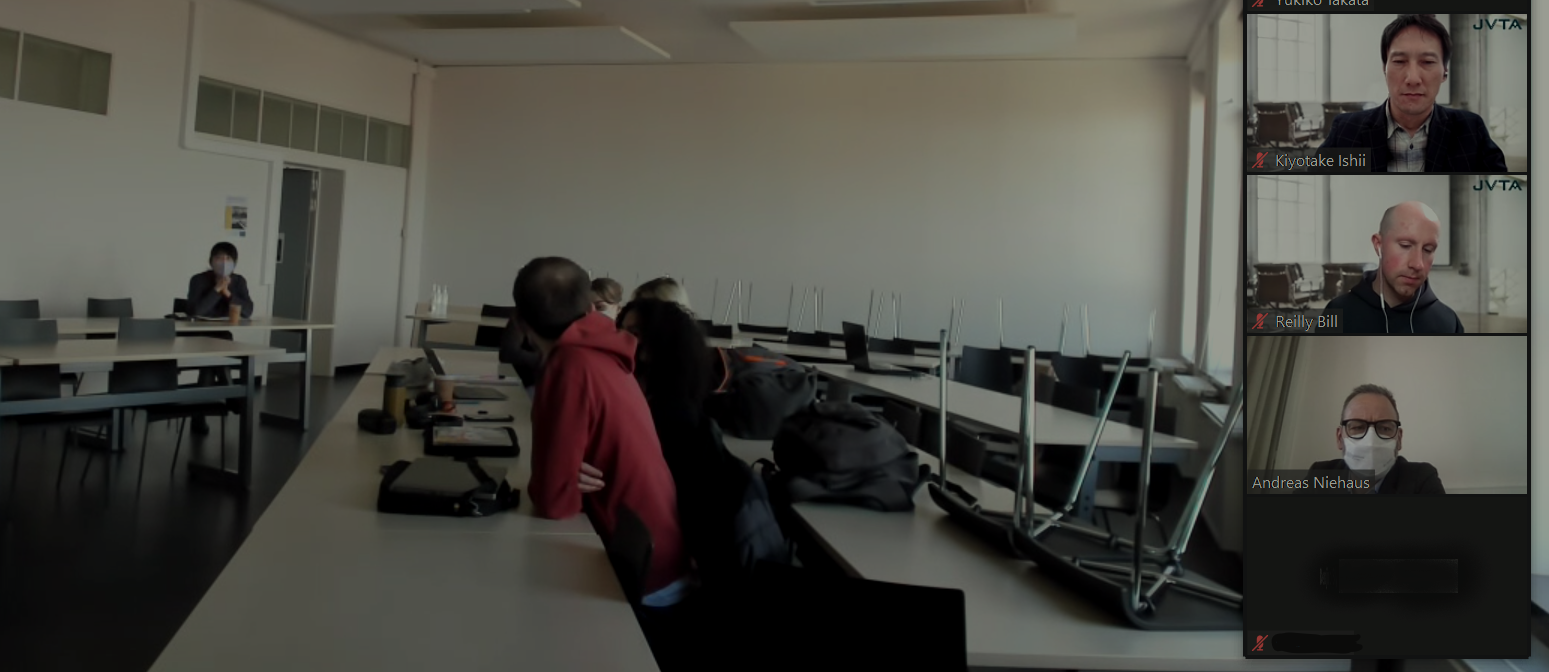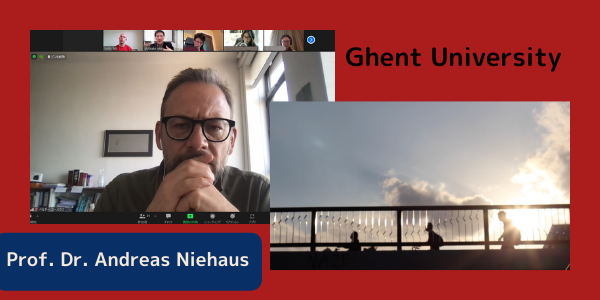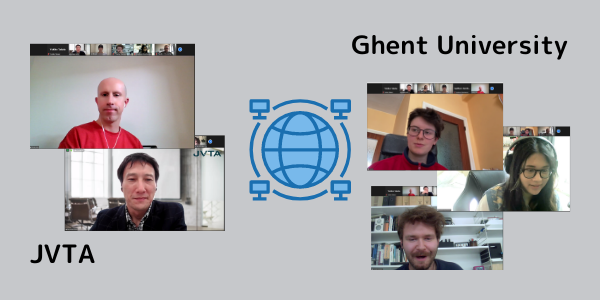ライター:高田由貴子
3月、ゲント大学でGUSPのオンライン講義が行われた。全4回の講義を通じて、学生たちは映画『グッバイ!』(中塚風花監督)の日英字幕制作に挑戦する。同作は昨年、映画監督の登竜門といわれる「PFFアワード」で準グランプリを受賞した青春映画だ。
今回は30分の映像を6つのグループに分けて翻訳する。各グループが担当する尺(映像の長さ)は約5分だが、前後の場面も意識しながら、自然に流れる字幕をつくらなければならない。各グループが仕上げた原稿は、学生全員と講師でチェックし、細かな表現をブラッシュアップしていく。
「『話し言葉』である方言を、『書き言葉』の字幕にできるのか」
「文字数は限られるが、人物の表情や気持ちも字幕で表現したい」
映像翻訳は決して単純ではない。特に「本音」が見えづらい本人同士の会話は、英語字幕にとって厄介だ。台詞を表面的にとらえるのではなく、行間を理解し、「台詞+心のうち」を字幕にすることが必要だからだ。
講義終盤では、推敲を重ねた字幕を実際の映像で確認する。字幕付きで作品を観た学生たちは「作品に携わる一員としてうれしい」と、喜びの表情を見せていた。彼らのこだわりが光る344枚の字幕は、5月にドイツで行われる日本映画の祭典「ニッポン・コネクション」でお披露目される。
講義を担当したJVTAの石井清猛講師は、GUSPの意義について「映像翻訳を体験してもらうこと」だと述べる。そして作品解釈や異文化理解について議論しながら、みんなで字幕をつくり上げる。そうした経験が、将来の言語学習や文化研究、映像鑑賞に新たな視点をもたらすのだと語った。
次回は、ゲント大学・ニーハウス教授が語るGUSPの魅力をお届けする。
By Yukiko Takata
In March, GUSP's online lectures were held at Ghent University. Through a total of four lectures, the students took on the challenge of translating the film "Goodbye! (directed by Fuka Nakatsuka) from Japanese to English. This film about youth won the runner-up prize at last year's PFF Awards, a gateway to success for film directors.
This time students were divided into six groups to translate the 30-minute film. Each group was responsible for a length of about 5 minutes, and they had to create subtitles with consideration to the parts before and after their scenes. The drafts completed by each group were checked by all students and the instructor, and together they brushed up the expressions used in their translations.
“How can a dialect in spoken language be conveyed through subtitles, which are written language?” “How can we express the facial expressions and feelings of the characters when the number of characters in subtitles are limited?” Visual media translation is never simple, and it requires coming up with answers to these questions. In particular, conversations between people whose true feelings are difficult to see are especially tricky when creating English subtitles. It is necessary to understand what is going on between the lines of the dialogue, and to translate the dialogue along with the thoughts in a character’s mind rather than just translating the words at surface level.
At the end of the lecture, the subtitles the students worked hard on were put together with the actual video. The students were delighted to see their subtitles on-screen, and expressed their happiness at being involved in the project. The 344 subtitles, which were created with great care by the students, will be unveiled at Nippon Connection, a Japanese film festival to be held in Germany in May.
JVTA instructor Kiyotake Ishii, who gave the lecture, says the significance of GUSP is to let students experience visual media translation. While discussing their interpretations of the work and cross-cultural understanding, everyone creates subtitles together. This experience will bring new perspectives to language learning, cultural studies, and film appreciation in the future, he said.
In the next update, Professor Niehaus of Ghent University will tell us about the appeal of GUSP.



